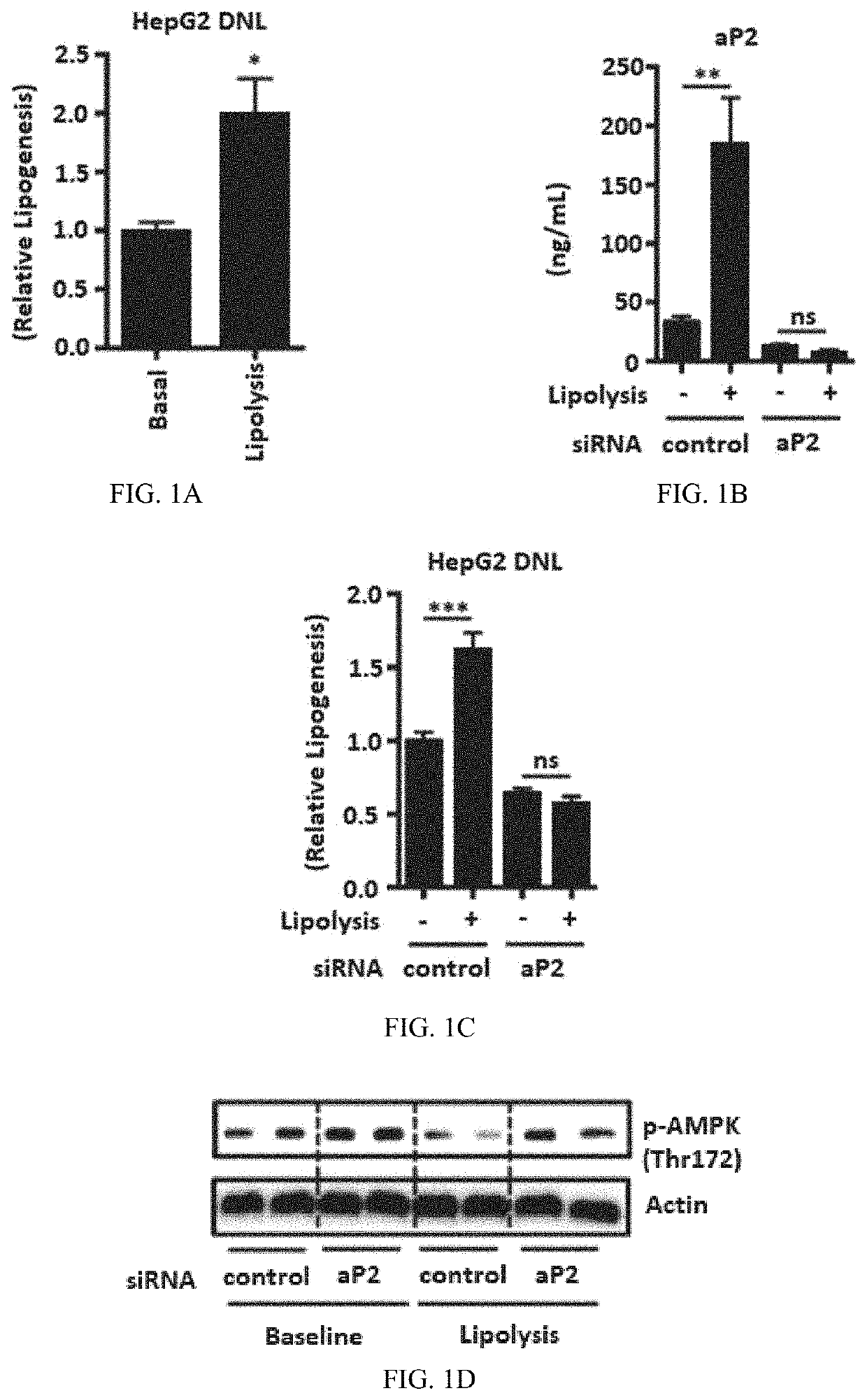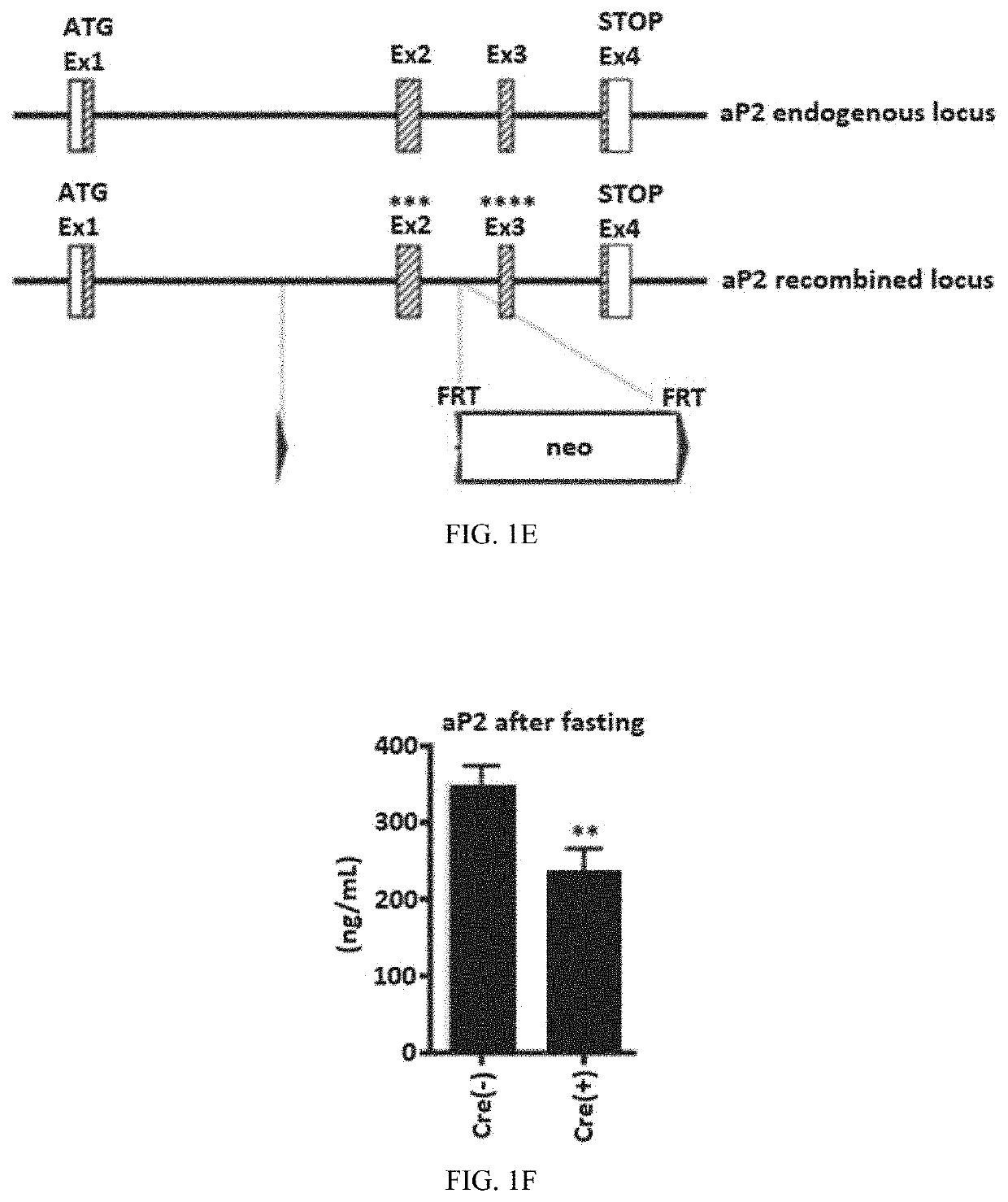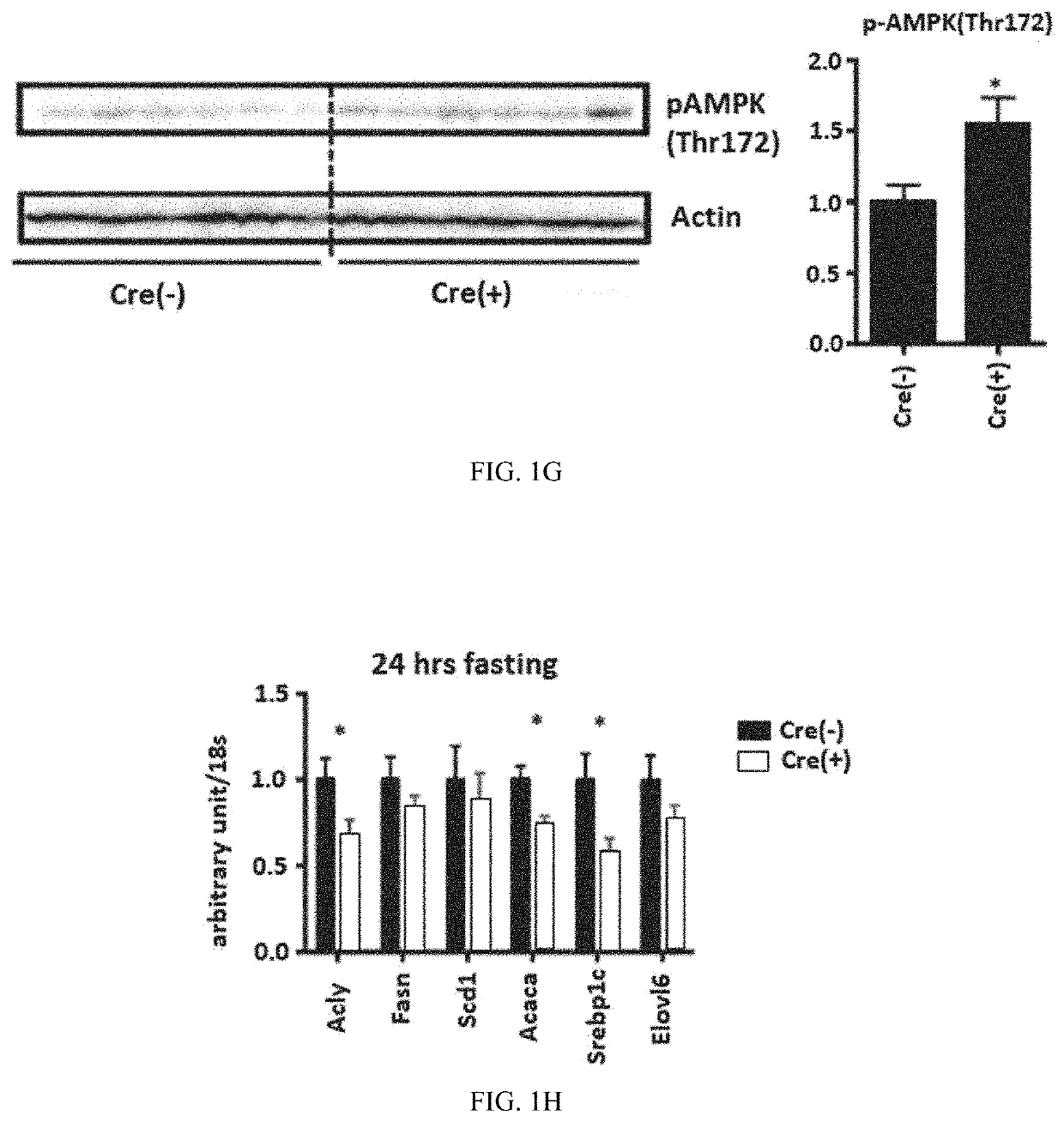Method to identify compounds useful to treat dysregulated lipogenesis, diabetes, and related disorders
a lipogenesis and dysregulation technology, applied in the field of identifying compounds useful to treat dysregulated lipogenesis, diabetes, and related disorders, can solve the problems of halting the therapeutic development of suicidal tendencies, significant increases in suicidal incidence and tendencies, etc., to prevent or decrease the stimulation of the cb1 receptor, increase the phosphorylation of ampk, and prevent or decrease the effect of 2-ag/ap2
- Summary
- Abstract
- Description
- Claims
- Application Information
AI Technical Summary
Benefits of technology
Problems solved by technology
Method used
Image
Examples
example 1
Animals
[0313]Wild-type C57BL / 6J mice, B6.129-Tg (Adipoq-cre / Esr1*)1Evdr / J, and ApoE− / − mice were purchased from Jackson Laboratories. Mice were maintained on a 12-hour light / dark cycle, with ad lib access to food. Mice were maintained on regular chow diet (RD; PicoLab 5058 LabDiet). High-fat diet (HFD) (60% kcal fat; Research Diets Inc., D12492i) and western diet (1.5% cholesterol); Research Diets Inc., D12079Bi) was used for HFD studies and ApoE mice studies. All experimental procedures involving animals were approved by the Harvard T.H. Chan School of Public Health (HSPH) institutional Animal Care and Use Committee.
example 2
[0314]Generation of Humanized aP2-Floxed Mice
[0315]Because human and mouse aP2 protein are highly similar with only 11 amino acid differences in exon 2 and 3, an aP2 fragment containing exon 1 to 4 with point mutations in exon 2 and 3 to humanize the protein was used to construct a targeting vector. The scheme for construction of the targeting vector is shown in FIG. 1E. The targeting construct was introduced into ES cells by electroporation, and G418-resistant clones were examined for homologous recombination using Southern blot. Two ES clones that contained the correctly targeted FABP4 locus were injected into C57BL / 6J blastocysts to obtain chimeric mice. Male chimeras were bred with C57BL / 6J female transgenic mice expressing the enhanced site-specific recombinase FLP to remove the FRT-flanked neomycin cassette to generate heterozygous floxed humanized FABP4fl / + mice. After generating the homozygous floxed humanized FABP4fl / fl mice, these mice were crossed with hemizygous transgen...
example 3
Metabolic Studies
[0316]For insulin tolerance tests (ITTs), mice were fasted for 6 h, after which blood glucose concentrations were assessed before intraperitoneal injection of 1U / kg of insulin (Eli Lilly Humulin) in 0.2% w / v BSA in PBS into C57BL / 6 mice fed HFD, and then 15, 30, 60, 90 and 120 min after injection. At each time point, a 5 μl blood sample was collected via a tail nick, and glucose was assessed using an automatic blood glucose meter. For intra peritoneal glucose tolerance tests (ipGTTs), mice were fasted for 16 h, after which blood glucose concentrations were assayed before intra peritoneal administration of 1 g / kg glucose. Glucose levels were then assessed 15, 30, 60, 90 and 120 min after the glucose administration.
PUM
| Property | Measurement | Unit |
|---|---|---|
| body temperature | aaaaa | aaaaa |
| pH | aaaaa | aaaaa |
| flow rate | aaaaa | aaaaa |
Abstract
Description
Claims
Application Information
 Login to View More
Login to View More - R&D
- Intellectual Property
- Life Sciences
- Materials
- Tech Scout
- Unparalleled Data Quality
- Higher Quality Content
- 60% Fewer Hallucinations
Browse by: Latest US Patents, China's latest patents, Technical Efficacy Thesaurus, Application Domain, Technology Topic, Popular Technical Reports.
© 2025 PatSnap. All rights reserved.Legal|Privacy policy|Modern Slavery Act Transparency Statement|Sitemap|About US| Contact US: help@patsnap.com



